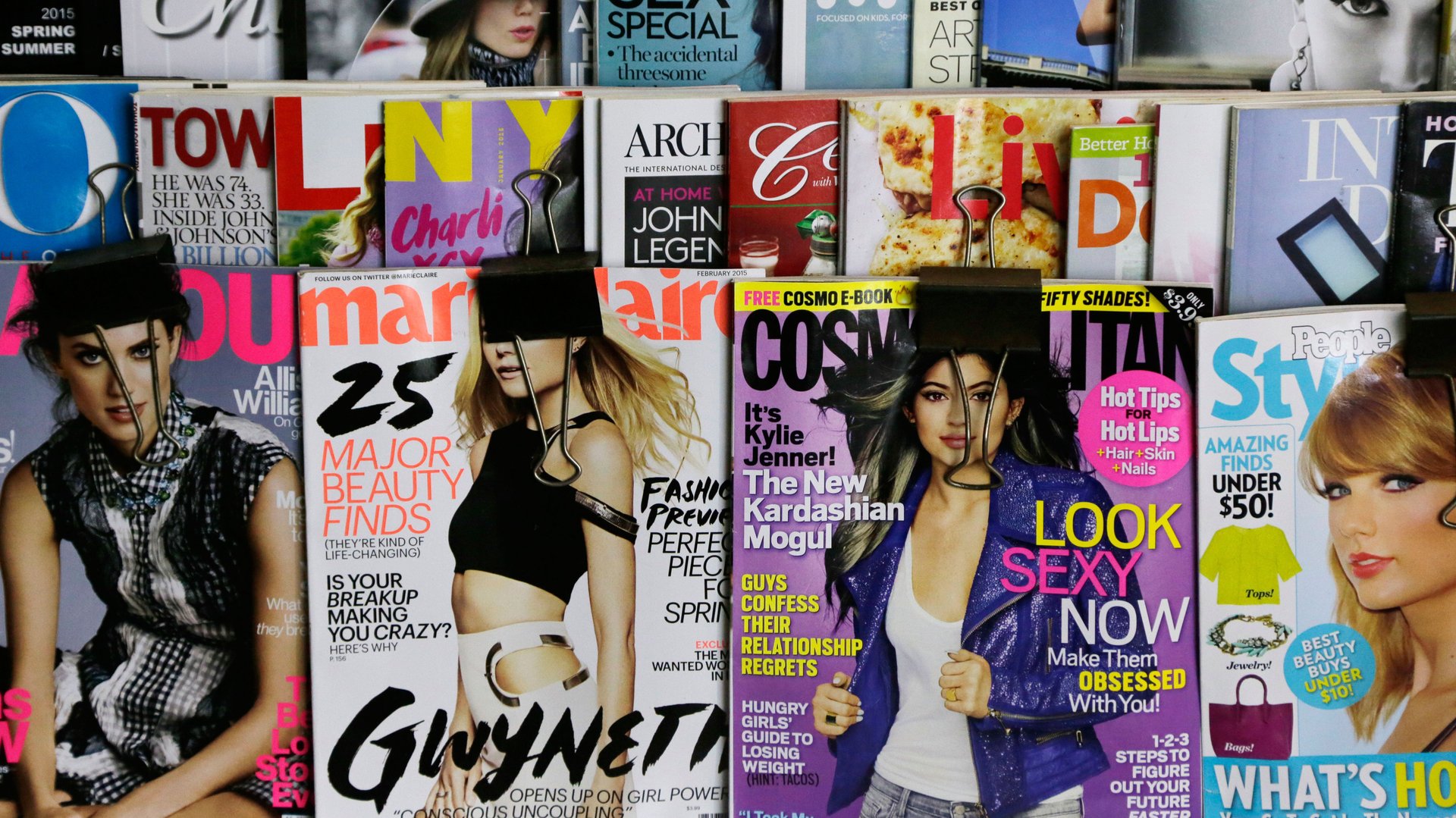In defense of reading Cosmo in the checkout aisle
I suppose that I, at the age of 16, was the kind of person that the National Center on Sexual Exploitation wants to protect from the scandalizing pages of Cosmopolitan.


I suppose that I, at the age of 16, was the kind of person that the National Center on Sexual Exploitation wants to protect from the scandalizing pages of Cosmopolitan.
I was the teenager who, with just a driver’s permit, stole the keys to my brother’s Camry and drove to the drugstore to buy the glossy women’s magazine. I’d sip a Powerade and pore over its descriptions of “volcanic eruption” orgasms and blow-by-blow instructions for oral sex.
Like many young women, sex didn’t feel particularly “volcanic” for me at the time, and having been taught sex ed by my high school football coach, I wasn’t exactly well-versed in the particulars. Too embarrassed to ask my mom, my friends and I turned to the only resource we knew.
So I was dismayed to hear that Walmart has removed Cosmo from its checkout lines, under pressure from a group that has successfully lobbied to have the magazine put behind blinders at other chains.
“Cosmo sends the same messages about female sexuality as Playboy,” said Dawn Hawkins, executive director of NCOSE, an anti-porn group with Christian roots that was previously called Morality in Media. “It places women’s value primarily on their ability to sexually satisfy a man and therefore plays into the same culture where men view and treat women as inanimate sex objects.”
This argument isn’t entirely meritless. No right-minded feminist, myself included, would tell you that Cosmo’s articles are your one-stop shop for a complete sexual education. And despite my study of the magazine, I still haven’t fully unlocked the secrets to the pure, firework-laden female orgasm every. Damn. Time. If you have, congrats. (I don’t believe you, unless your referring to your vibrator.)
But reading Cosmo as a teenager, as absurd as it sometimes was, didn’t suggest to me that I was an object to be tooled with—quite the opposite. Instead, the articles helped me realize that other women have questions about sex, too, and that this whole dimension of life isn’t always Hollywood-perfect.
Let’s be clear: Cosmo, while a controversial and imperfect beast, is a staple of female sexuality, and sex-positivity.
And despite the deluge of sexual imagery in today’s media and advertising, sex-positivity is desperately needed in America. From our Puritan roots, to 19th century physicians treating the female orgasm as “hysteria,” to modern-day female genital circumcision (yes, in the US), to Stormy Daniels being branded as a cravenly ambitious hooker, there’s no escape from the message that female sexual pleasure is shameful and disgusting.
Throughout the years I’ve done plenty of research on sex, relationships, and hookup culture. And while I don’t have a subscription to Cosmopolitan, I’ve continued to shamelessly flip through the magazine whenever I find it on the checkout aisle. I’ve had countless men—and even more women—raise a brow when they see me reaching for it. “Sweetie, don’t read that trash,” they tell me, patronizingly. The message behind this not-so-subtle judgment is that the magazine isn’t just trivial, but also a threat to my self-worth as a young woman.
Worse is the implied, deeply sexist, presumption that women who enjoy reading Cosmo cannot simultaneously hold two truths in mind—that our mushy sensitivities will be so enrapt with orgasmic grandeur we won’t be able to step back and realize that tantric-unicorn bang time probably isn’t your average Tuesday night. (Nor does it need to be to have a healthy, happy sex life.)
The NCOSE invoked feminism and the #metoo movement when it pushed Walmart to remove Cosmo from checkout aisle—a cunning tactic that allowed the group to point to the hyper-sexualization of the American media, which can indeed demean women while touting their supposed liberation. (A spokesman for Walmart told me the decision was “primarily based on business,” not morality or feminism. Walmart regularly shuffles items in the checkout line, and while Walmart acknowledges that the NCOSE pressed for the change, this rep said moving Cosmo was driven by factors like magazine’s sales numbers.)
To suggest this move is about #metoo is a cynical distortion of the movement, as others have pointed out. And the truth is, I take a certain pride in publicly flicking through such an shamelessly sex-oriented publication. Given our socio-cultural fear and disgust at female sexuality, this act in and of itself feels defiant. Thankfully, the magazine is no longer mired in the “how to please him” mentality that once dominated its pages. Today you’ll find scientifically backed content de-stigmatizing sexually transmitted infections, arguments for why a woman’s hijab shouldn’t affect her healthcare, intimacy education for queer couples, and advice on starting your own small business.
Of course it’s still a glossy women’s magazine, rife with the “aspirational” content that sits comfortably alongside advertisements for cosmetics, diet plans, and “wellness” supplements. It can’t be trusted to comprehensively explore the nuances of intimacy and health beyond (or even within) heterosexual, cis-gendered sex. Nor should anyone viewing Cosmo conclude that the predominantly size-zero, poreless models lining its pages are a realistic or definitional representation of beauty. Publications like Cosmo will continue to self-handicap until they diversify their representation of diverse body types, abilities, and races.
But taking a few minutes out of the daily slog to read some first-time sex tips or to consider investing in sex furniture shouldn’t undermine me as an independent, intelligent woman. It’s just fun. And when I’m standing in line at Walmart, that’s something I desperately need. I guess I’ll have to make do with the TV Guide.